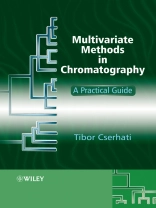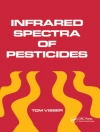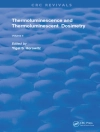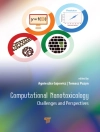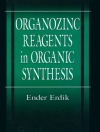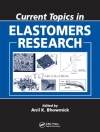* A comprehensive, compilation and evaluation of the newest
results in the field of enumerate evaluation of chromatographic
data
* Aimed at the practicing professional, researchers and advanced
students working in this area
* Special emphasis on practical applications
* While the principles of chromatography and multivariate
mathematical-statistical methods are discussed separately, the book
focuses on their interconnection.
* Written by a chromatographer for
chromatographers
Tabella dei contenuti
Preface.
Introduction.
List of Abbreviations, Acronyms and Symbols.
Chapter 1. Fundamentals.
1.1. Multilinear and nonlinear regression analyses.
1.2. Stepwise regression analysis and partial least squares method.
1.3. Two and three-dimensional principal component analysis, various factor analytical techniques.
1.4. Canonical correlation analysis.
1.5. Discriminance analysis.
1.6. Spectral mapping.
1.7 Nonlinear mapping.
1.8. Cluster analysis.
1.9. Other multivariate techniques (fixed-size window movement, rank annihilation, etc).
1.10. Measured and calculated physicochemical parameters of chromatographis systems and analytes.
Chapter 2. Gas Chromatography (GC).
2.1. Theory and practice of gas chromatography.
2.2. Comparison of GC stationary phases using homogenous and non-homogenous set of analytes.
2.3. Elucidation of similarities and dissimilarities among samples.
2.3.1. Human health and pharmaceuticals.
2.3.2. Forensic analyses.
2.3.3. Biology and agrobiology.
2.3.4. Food and food products.
2.3.4.1. Wines.
2.3.4.2. Oils.
2.3.4.3. Foods of plant origin.
2.3.4.4. Miscellaneous food products.
2.3.5. Environmental analyses.
2.3.5.1. Volatile organic compounds (VOC), polycyclic aromatic hydrocarbons (PAH), and polychlorinated biphenyls (PCB).
2.3.5.2. Miscellaneous environmental pollutants.
2.3.5.3. Gasoline.
2.3.6. Other synthetic compounds.
2.3.7. Miscellaneous applications.
Chapter 3. Liquid Chromatography (LC).
3.1. Thin-layer chromatography (TLC).
3.1.1. Theory and practice of thin-layer chromatography.
3.1.2. Multidimensional classification of TLC stationary and/or mobile phases.
3.1.3. Relationships between molecular parameters and TLC retention of analytes.
3.1.3.1. Pharmaceuticals and natural organic compounds.
3.1.3.2. Fatty acids and bile acids.
3.1.3.3. Pesticides and pesticide adjuvants.
3.1.4. Relationship between TLC retention parameters and biological activity of analytes..
3.1.5. Miscellaneous applications.
3.2. High performance liquid chromatography (HPLC).
3.2.1. Theory and practice of HPLC.
3.2.2. Multidivariate classification of HPLC stationary and/or mobile phases.
3.2.2.1. Classification of stationary or mobile phases.
3.2.2.1.1. Principal component analysis (PCA).
3.2.2.1.2. Other multivariate techniques.
3.2.2.4. Classification of chromatographic systems.
3.2.2.4.1. Multilinear and multi nonlinear regression analyses (MLR and MNLR).
3.2.2.4.2. Principal component analysis (PCA), cluster analysis (CA) and other multivariate techniques.
3.2.3. Differentiation between homologous and non-homologoues sets of analytes.
3.2.3.1. Human health.
3.2.3.2. Biological applications.
3.2.3.3. Agrobiochemistry.
3.2.3.4. Microbiology.
3.2.3.5. Natural (herbal) medicines.
3.2.3.6. Synthetic pharmaceuticals.
3.2.3.7. Wines.
3.2.3.8. Cheeses.
3.2.3.9. Miscellaneous foods and food products.
3.2.3.10. Polycyclic aromatic hydrocarbons.
3.2.3.11. Pesticides and homologous series of pollutants.
3.2.3.12. Non homologous series of pollutants.
3.2.3.13. Other environmental pollutants.
3.2.3.14. Miscellaneous HPLC applications.
Chapter 4. Electrically Driven Systems.
4.1. Theory and practice of electrically driven systems.
4.2. Gel electrophoretic techniques.
4.2.1. Theory and human health aspects.
4.2.2. Microorganisms.
4.2.3. Microbial communities.
4.2.4. Plant tissues.
4.3. Capillary zone electrophoresis (CZE).
4.3.1. New advances in CZE theory.
4.3.2. Human health and pharmacology.
4.3.3. Other applications.
4.4. Micellar electrokinetic chromatography (MEKC) and related technologies.
Index.
Circa l’autore
Professor Tibor Cserhati, Chemical Research Centre, Research Institute of Materials and Environmental Chemistry, Hungarian Academy of Sciences, Budapest, Hungary Graduated in Chemical Engineering in 1962 and received his Ph D in 1973 from the Technical University of Budapest. From 1975 – 1988 he was a senior research scientists at the Plant Protection Institute of the Hungarian Academy of Sciences and from 1989 scientific counsellor at the Central Research Institute for Chemistry. He is the author/coauthor of more than 500 papers and 5 books. His main fields of interest are various chromatographic methods including TLC, GC and HPLC and the application of multivariate methods for the evaluation of chromatographic data.
